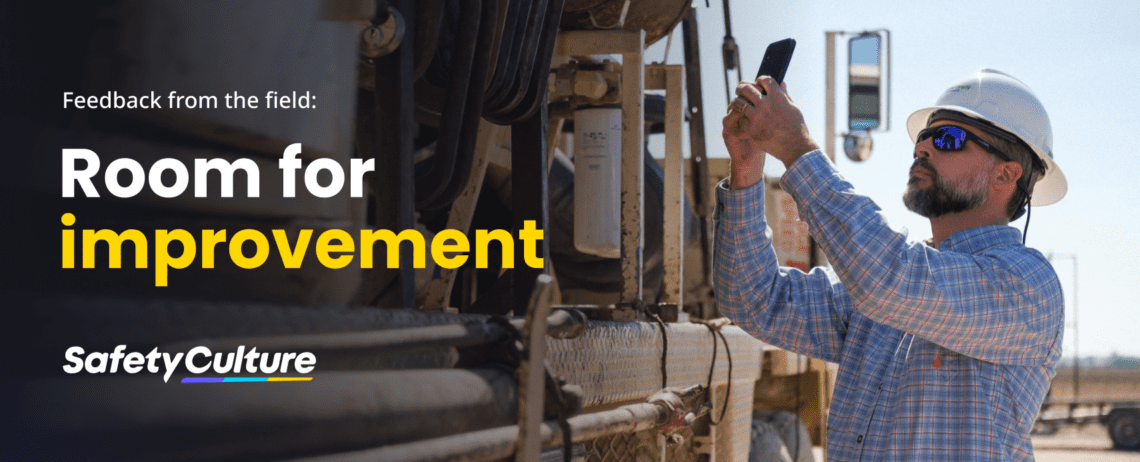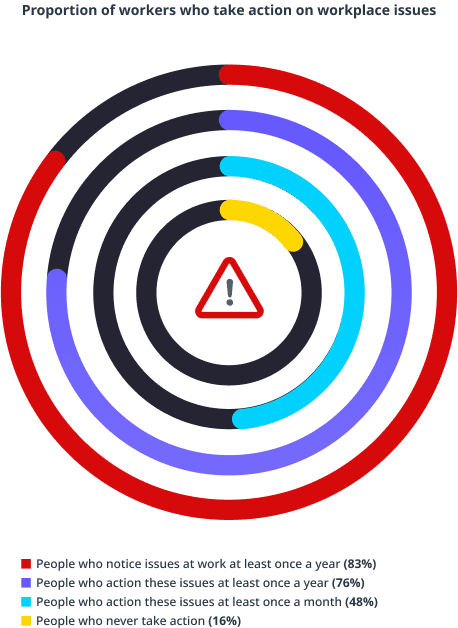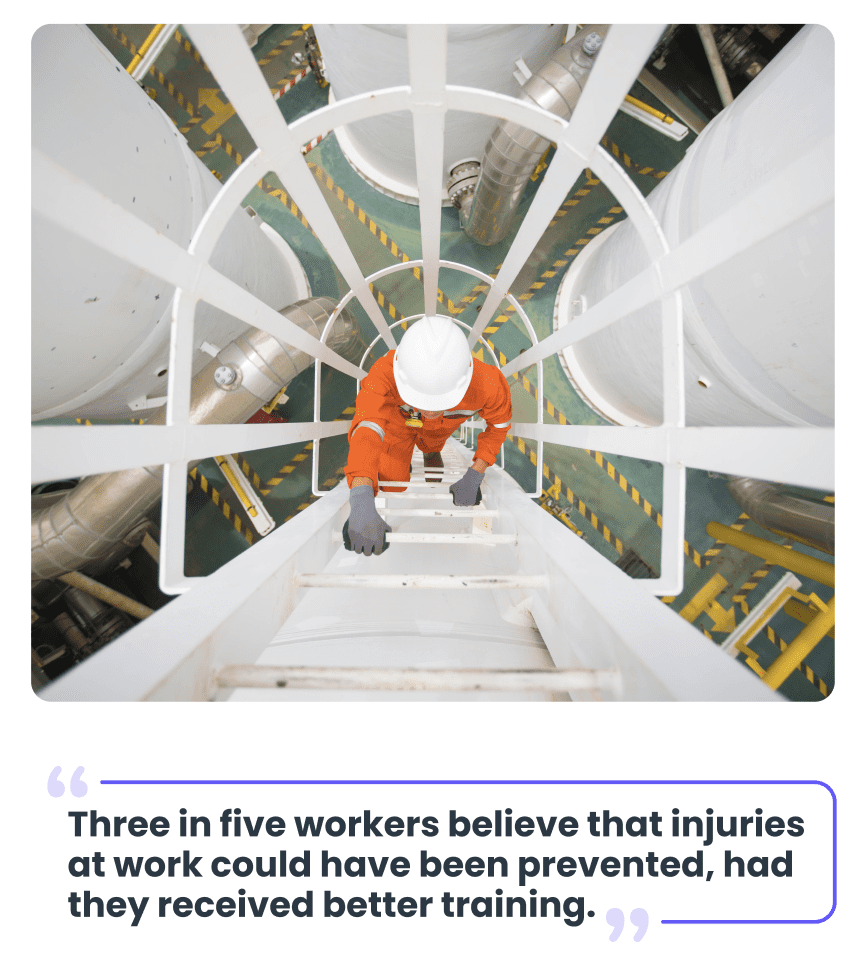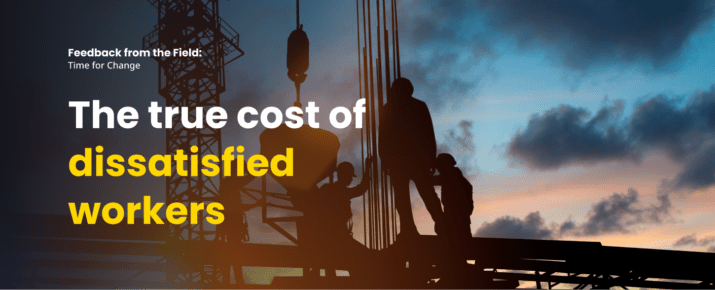Frontline workers survey findings revealed in ‘Feedback from the Field: Room for Improvement’
Feedback From The Field | SafetyCulture News | By | 27 Oct 2023 | 3 minute read

Since the pandemic, our frontline workers have taken center stage as our unsung heroes, the ones on the ground who are typically the first port of call. They’re indispensable to our lives and economy, making up 80% of the global workforce*.
The SafetyCulture platform is designed with frontline workers in mind. We want to help make their work lives easier and safer. To do that, though, we need to know what it is they need – and a lot of the time, there’s a disconnect between what frontline workers want, and what their leaders think they want. Without that insight, leaders don’t have the full picture to drive their businesses forward.
“We designed the SafetyCulture platform to give frontline workers a voice. We purpose-built our tool for frontline workers so they can raise issues and call out improvement opportunities to better the organizations they work for. We find that workers on the frontline are often the real experts on workplace operations.”
– Sam Byrnes, Chief Product Officer, SafetyCulture
That’s why we conducted a survey, with the help of YouGov, where we asked more than 2,000 frontline workers to shed some light on their experiences and needs. And we’ve packaged up those findings in a neat report – Feedback from the Field: Room for Improvement. The research aims to uncover the gaps between employers and frontline workers, and to answer the question: How can leaders unlock the latent potential in their frontline teams and move towards a better way of working?
Here’s a preview of the report
Stand up and take action
Being on the ground, frontline workers are the eyes and ears of the operation. Three in five (65%) workers say they observe operational issues at work at least once a month, yet just under half (48%) say they see people doing anything about it. Why is that? How can we encourage a culture where more action is taken to rectify issues? Notably, workers in Australia are more likely to spot these issues compared to those in the UK and US.

A call for more training
Learning is a high priority for frontline workers. One-quarter (25%) of workers say they’ve had valuable training from their organization, which helped them improve at their jobs over the past year or so. Alarmingly, nearly two in three (64%) workers believe that at least a few workplace injuries could have been prevented had they received better training. It’s simple, really – better training means safer workers. Our new Training feature on the platform can improve how your team learns – including a useful tool called AI Create, where you can build a course within minutes, not days.

Safety vs salary
With the cost of iceberg lettuce skyrocketing across the globe, you’d think money talks. But turns out safety still has the upper hand on a bigger salary. If forced to find a new job, most workers prioritize safety over a better salary, with only one in five (22%) saying they’d choose a job with a higher salary and a higher level of risk. The vast majority (65%) say they’d choose jobs with equal or lower risk levels and a similar salary. For leaders, it’s important to make it clear that you consider your frontline workers’ safety a top priority too.
“We empower our drivers to call a timeout if something doesn’t feel safe. [Alerts] go to me, our safety director, and all the top operation leaders. Out goal is to call that driver beore they leave to say thank you for pointing this out, and to get more information. It’s an all-hand-on-deck [operation] for something that hasn’t happened yet.”
– Kyle Close, Vice President of Operations, North America, Brenntag
*Reference:
Emergence (2018). The rise of the deskless workforce.
Related content:
- Read more about the SafetyCulture platform
- Press release: Feedback from the Field
- Brentford customer story
Important Notice
The information contained in this article is general in nature and you should consider whether the information is appropriate to your specific needs. Legal and other matters referred to in this article are based on our interpretation of laws existing at the time and should not be relied on in place of professional advice. We are not responsible for the content of any site owned by a third party that may be linked to this article. SafetyCulture disclaims all liability (except for any liability which by law cannot be excluded) for any error, inaccuracy, or omission from the information contained in this article, any site linked to this article, and any loss or damage suffered by any person directly or indirectly through relying on this information.





